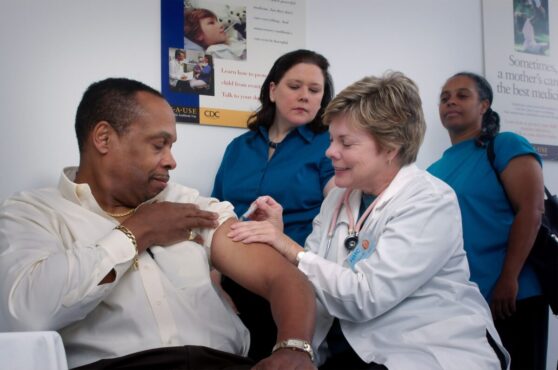Social media has helped shed light on the biases and racism in nursing. As more influencers use their platforms to call out racism, promote diversity within the nursing profession, decrease racial health disparities, and promote health equity, implicit bias is a phrase that you may hear come up in conversation. Patients should always receive good care, regardless of their characteristics, identities, or traits. Unfortunately, certain implicit biases exist in healthcare, and they can negatively affect patient care.
Implicit bias refers to a person’s unconscious prejudice about another thing, group, or person. Implicit bias can affect a person’s actions without them knowing. So how does implicit bias affect healthcare?
What is Implicit Bias in Healthcare?
Everyone is capable of implicit bias, even healthcare workers. It develops early in life, stemming from the repeated reinforcement of stereotypes. Other factors also contribute to implicit bias, such as messages that you’ve been exposed to through the media that define groups of people or societal norms of varying representations of people. For example, society may define what femininity or masculinity should look like.
Implicit bias can shape the way healthcare professionals interact with patients. Because implicit bias is subconscious, it can find its way into patient-provider communication. Patients may be subjected to implicit bias based on several factors:
- Race
- Ethnicity
- Gender
- Education level
- Gender identity
- Socioeconomic status
- Disability
- Age
- Insurance status
The healthcare facility’s location can also influence patient care and increase implicit bias. For example, if the facility is in a “bad or poor” neighborhood, staff may have a preconceived perception of the patients who present to the facility. Healthcare decisions and treatment plans may be based just as much on who a person is as on the symptoms they present. This is dangerous in healthcare because these decisions can mean life or death.

Examples of Implicit Bias in Healthcare
Implicit bias can lead to false assumptions, which cause negative outcomes. Evidence shows that implicit bias leads to negative outcomes for minority groups. Communities and populations of people who are already vulnerable or disadvantaged suffer the most:
- Minorities
- Immigrants
- Poor
- Elderly
- Women
- Children
- Disabled
- LGTBQIA+
- Those with low health literacy
Implicit bias is one possible cause of health disparities, such as racial healthcare disparities.
Examples of unconscious bias leading to health disparities include:
- White medical trainees believed that Black people weren’t as sensitive to pain as white people & were less likely to treat Black people’s pain appropriately
- Assuming low-income patients are less likely to adhere to their treatment plans or less intelligent
- Pregnant women facing discrimination based on their ethnicity or socioeconomic background
- Assuming that people who do not identify as CISgendered and heterosexual are more likely to engage in risky behaviors
Some examples of how implicit bias can negatively impact health outcomes include:
- Nonwhite patients are less likely to be prescribed pain medications
- Black people are less likely to receive treatment for cardiovascular disease
- Black women most likely to die from breast cancer
- Physicians are less likely to treat suicidal ideation in elderly patients, although those 85 and older have the second-highest rate of suicide of any age group
- Data has shown over time persisting disparities in COVID-19 cases for Hispanic people and deaths for Black people

How to Overcome Implicit Bias
Once you’re aware of your biases, you can start working towards overcoming them. Recognize the stereotypical thoughts and assumptions and train yourself to focus on the patient as your primary source of information. Here are ways to overcome bias:
- Recognize stereotypical thinking
- Replace biases and assumptions and get to know the patient
- Evaluate the racial climate of your job or unit by looking at shared perceptions amongst the staff
- Communicate the need to foster diversity of the unit or facility
- Call out and report discrimination, racism, and unfair treatment
- Work on meeting equity-specific goals in patient care and health outcomes
- Recognize situations that magnify stereotypes
- Seek out cultural competence training
- Ask for training on implicit biases, cultural competence, diversity, and health equity
Overcoming biases is a lifelong process. Start with yourself and then move to your unit, and eventually the entire facility. Educate yourself to have a basic understanding of your patient’s cultures, struggles, and health disparities. Remember that each patient is an individual, and avoid placing stereotypes on your patients.
Discover how to provide culturally competent care to ensure all patients feel safe and heard in our guide on Cultural Competence in Healthcare and Why It’s Important.










Thank you for the information. Looking forward to this class.
Practical info that can be used to help make us all better healthcare providers.
Thank you for the information
Interesting perspective
Nice Article – Thank you for sharing
Thank you for putting this together. It is very informative. I look forward to my class tomorrow.
Great information that forces one to re-examine oneself. Anyone can fall into the trap of unconscious/implicit bias.
Great information! Thank you for sharing.
Great information, thank you.
Very informative. Thank you.
Thank you for the information. Looking to attend this class.
thank you for the info
Learn something new
It is always rewarding to refresh our thinking. We so easily can slip back into implicit bias. Thank you for this information.
Thank you for the information
Interesting article! Thanks!
Thanks
thanks
Very informative and always opportunity for growth and improvement
Looking forward for that class
Very informative. Thank you
An eye opener. very informative
Short and informative.. Thank you
Can’t wait to learn more.
Thanks for the information, enjoyed it
Thank you for the information
Thank you for the information
There is always more to learn.
Looking forward to the course.
Looking forward to the class.
Looking forward for this class
thanks for the info
Good article
looking forward to the class on Wednesday
thank you for the information
Thank you for the information.
Look forward to the class Monday morning.
Looking forward to this class
Always an interesting class with interesting discussion!
Thank you for the information 🙂
I had this course last year and am looking forward to this one.